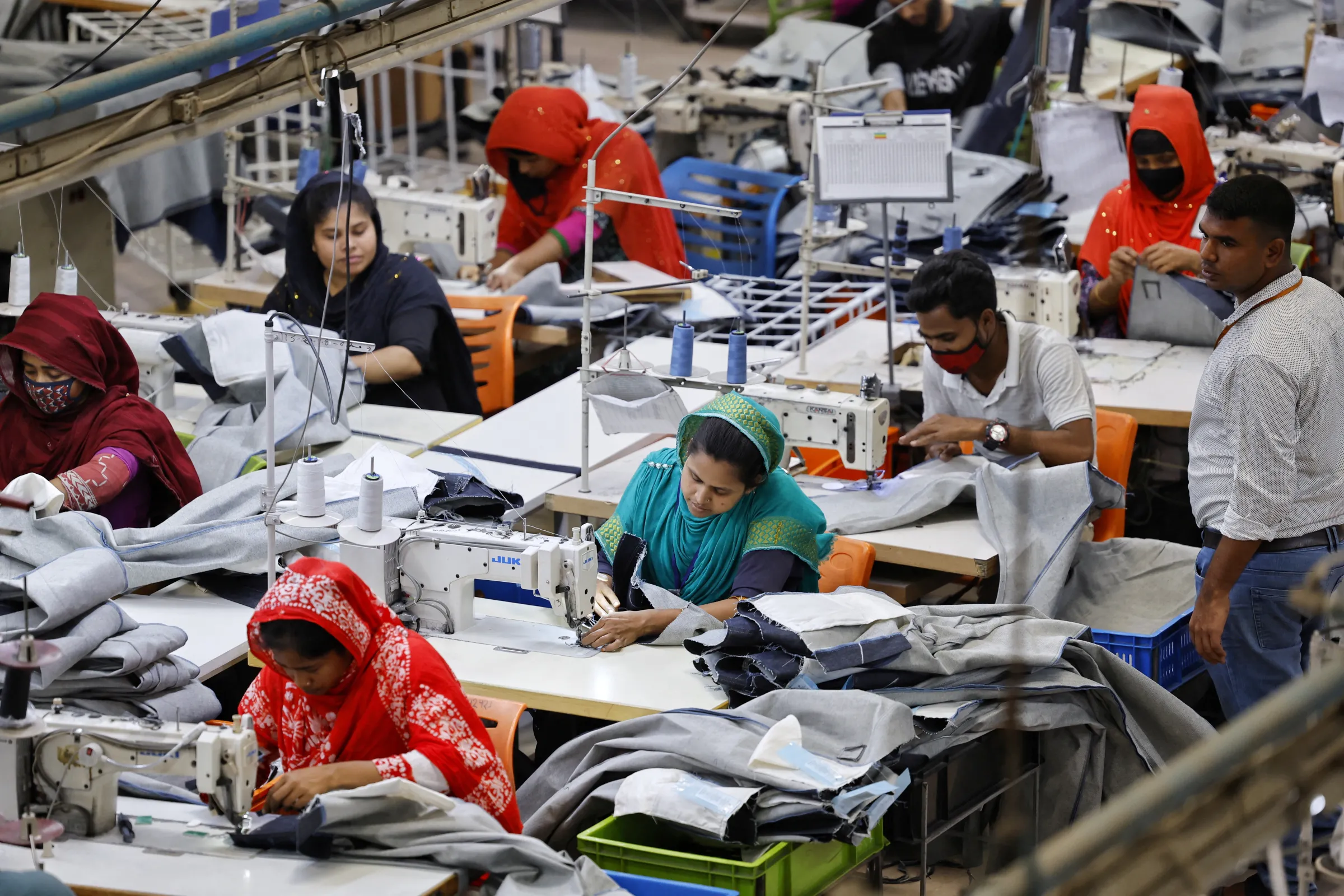Q&A: How fashion brands can help suppliers go green

Bangladeshi garment workers works in the sewing section of a factory in Gazipur, Bangladesh, April 9, 2025. REUTERS/Mohammad Ponir Hossain
What’s the context?
Small steps in energy efficiency help but big money is needed to clean up fashion's filthy production line.
- Despite pledges, carbon emissions keep rising
- Investments vital to cut factory pollution
- Big brands need to partner with accountable suppliers
DHAKA - The fashion industry has seen its carbon emissions rise despite pledges to halve pollution by 2030 - now efforts are underway to invest millions of dollars in ambitious energy efficiency projects that will clean up dirty production lines.
The Apparel Impact Institute (AII) is a U.S.-based non-profit that works with fashion retailers, philanthropic organisations and manufacturers to promote investments in cleaner production.
The total investment needed for the industry to meet its goal of net-zero emissions by 2050 is estimated at $1 trillion, according to the AII, be it through installing better insulation or by reusing waste heat.
We asked Lewis Perkins, President of the AII, how the $1.7 trillion industry can hit its ambitious decarbonisation targets.
Many big brands have pledged to cut their carbon footprint but emissions are still growing. What could bring change?
When it comes to helping the highest carbon-emitting regions and suppliers decarbonise their processes, it will happen faster when brand retailers collectively source from suppliers reaching certain decarbonisation thresholds to demonstrate collective action - that is co-investing.
Retailers would be able to make decisions - like if a supplier reaches a certain benchmark, would a brand give preferred sourcing or commit a percentage of volume to those suppliers?
Suppliers need to be given a longer-term view.
How is progress going on securing the decarbonisation financing that is so badly needed by the industry?
Our 'Fashion Climate Fund' is the pool with the ambition of raising 250 million in catalytic capital. We would be looking at using this money to build and unlock programmes, and subsidise suppliers to take on interventions.
Where we can claim success is around energy efficiency programmes like our 'Clean by Design' programme, getting the suppliers organised around the pathway for carbon reduction, starting with some low-hanging fruit initiatives like wrapping pipes or installing meters - which can return value in lowering energy and water bills.
Now we're stepping into bigger projects where thermal heat recapturing and lowering heat intensity at the facility is going to require installation of equipment like heat pumps and longer- term electrification to eliminate on-site coal. We've started to put together a subsidy model called the 'Deployment Gap Grant'.
We can also guarantee loans through our pooled funds.
That's coming next.
Lowering the cost of the debt is going to move these projects faster. With the $250 million 'Fashion Climate Fund' fully raised, we would unlock about $2 billion in debt financing.
Different countries have radically different energy mixes and policy frameworks - how can you tackle such a range of models?
Ultimately, how much opportunity is there within that specific country around renewable electricity versus on-site solar, wind, geothermal?
Every country is different.
Helping suppliers invest in efficiency is Step One, but we are also starting to look at increasing the renewables and the opportunity for longer-term thermal electrification.
That's where we want to go - partner with some longer-term energy installation projects.
Country-specific strategies are going to be increasingly important as we step into these larger investments.
How should the industry include workers and local communities in this climate transition?
We're working on a project right now looking at the ecological risks of inaction: the cost of energy, the cost of water, the cost of carbon pricing, and long-term impacts on local ecosystems and communities.
We will increasingly look towards projects and innovations that will address water as a key performance indicator.
There needs to be more alignment to the social and community impact related to [whether] the investments going into production facilities are ensuring longer-term benefits to those communities.
(Reporting by Md. Tahmid Zami; Editing by Jack Graham and Lyndsay Griffiths.)
Context is powered by the Thomson Reuters Foundation Newsroom.
Our Standards: Thomson Reuters Trust Principles
Tags
- Energy efficiency
- Net-zero
- Carbon offsetting
- Innovative business models
- Corporate responsibility
















